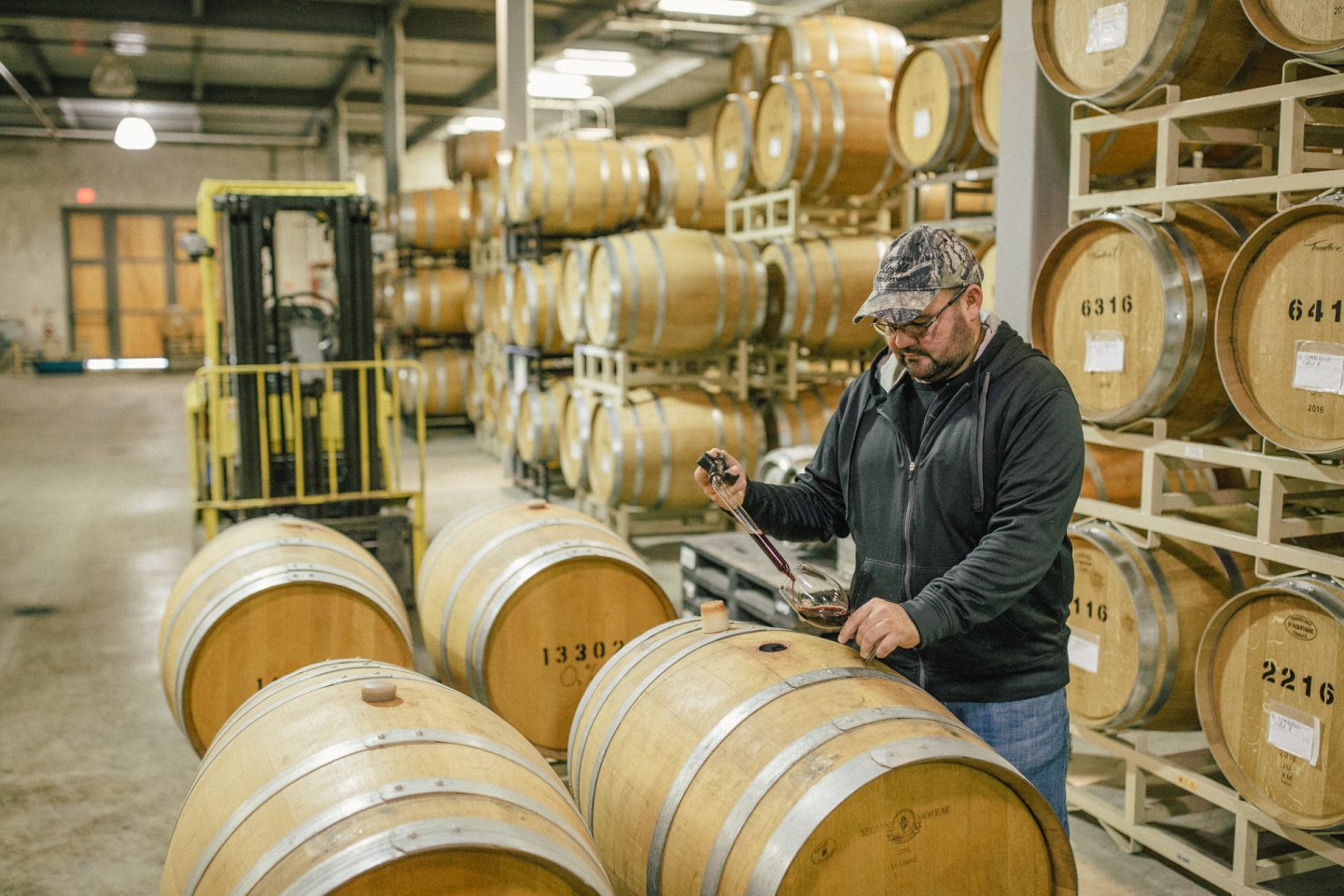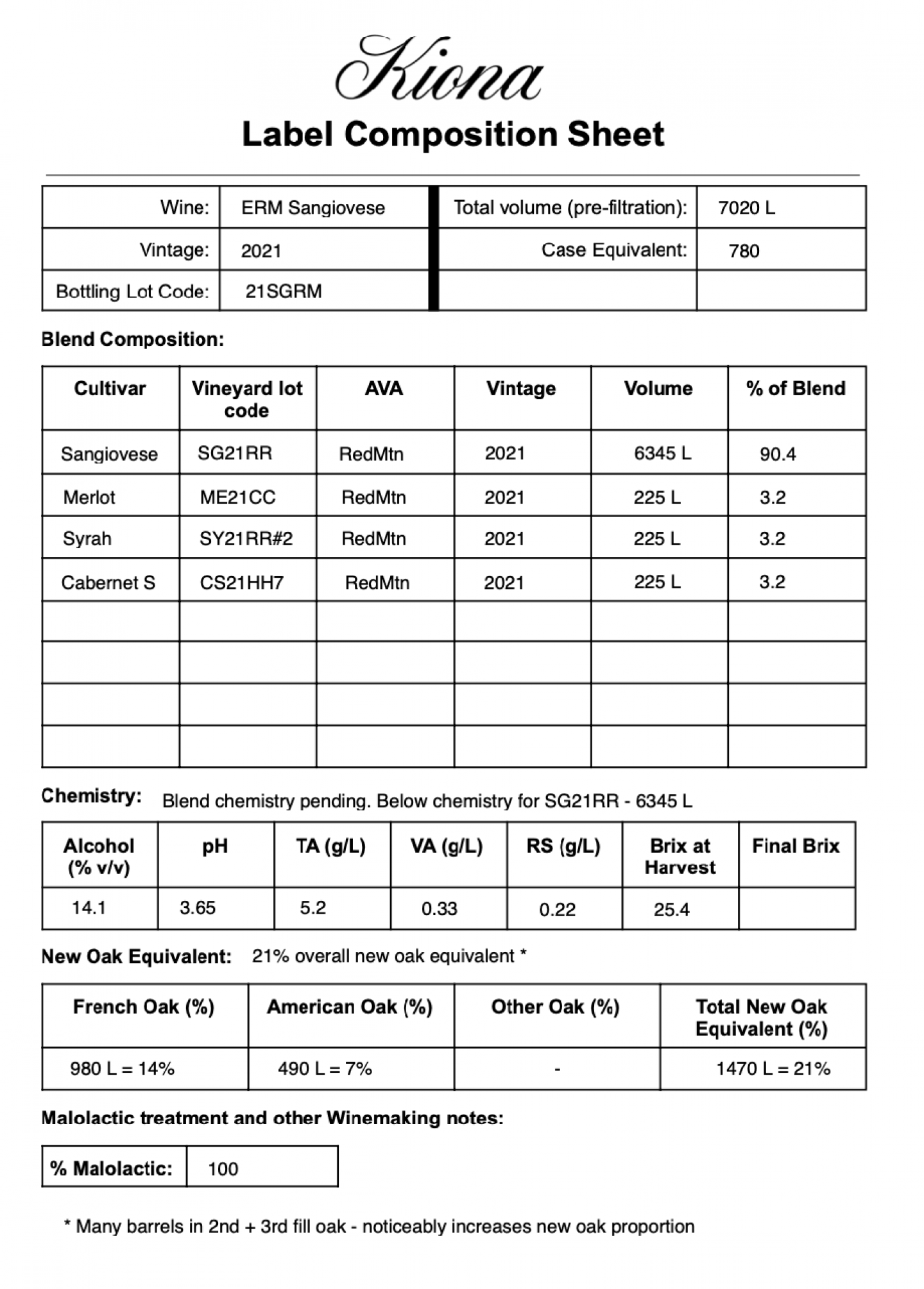We've got a different approach to wine copy here at Kiona Vineyards and Winery. Long story short, we try to avoid "flavor listing," the practice of listing aromas and flavors as a proxy for a description of the wine. Instead, we'd rather discuss geographical origin, vineyard detail, and winemaking philosophies/decision-making.
Wine marketing is exceedingly good at attempting to communicate "Thing A" by saying "Thing B." Industry-speak and layering assumptions combine to create marketing copy and descriptors that mean close to nothing at all. Here's an example of a commonly-heard industry trope -
"This is our red Bordeaux blend."
This phrase is misleading and obtuse. The winery is trying to communicate that the wine is a blend of two or more of the "Bordeaux cultivars," Cabernet Sauvignon, Cabernet Franc, Merlot, Petit Verdot, and Malbec. But why not just SAY that? The wine almost certainly isn't from Bordeaux (so it's not a Bordeaux blend), and most people, even wine drinkers, can't list from memory the five red grapes typical of the region.
This brings me to the topic of today's post: oak information.
It's common practice in the world of wine collateral to list an oak regimen strictly as a length of time (number of months) and percentage of French/American/Other. This can be interesting information, but to a very narrow audience - people that make wine. For the people that sell/buy/consume wine, it's borderline worthless all by itself.
As far as I see it, the question we're attempting to answer is:
"How oaky is this wine?" (Thing A)
and we are answering with something like:
"20 Months in 60 French / 40 American" (Thing B)
The problem is that "20 months in 60F/40A" does not give the asker an answer to the question, "how oaky is this wine?" It might provide some supporting detail, but so much is missing (including, but not limited to):
- Are the barrels new? 2nd fill? Neutral?
- Grain? Barrel size?
- How about the toast - Light? Medium +? Heavy? And are the heads toasted?
- Was the wine fermented in the barrel, or transferred afterward?
Here's a car analogy. Suppose someone asks, "How fast is this car?" The wine-industry answer would be something like, "This car has 370 horsepower." Horsepower can maybe tell you something about how fast the car is, but it's just a piece of the puzzle, not a definitive answer.
At Kiona, wine doesn't have a linear path through the cellar. Different blocks/vineyards/pick dates/ferment lots/press fractions are kept separate and barrel lots are continually topped, analyzed, tasted, and consolidated. That's right, consolidated. We might take a group of 8 barrels, for example, and after determining that they taste great together, pull the wine out, homogenize it, and then fill the barrels back up with the newly blended lot. Different components in each wine each journey through the system in different lots, at different speeds, and in different barrels. So it's not so simple to say "20 months in 60F/40A" when the answer is much more complex and nuanced.
When we finish a blend, my brother gives me a sheet of paper that I use to fill in the technical details of the spec sheet, a piece of marketing collateral for distributors, wine buyers, and (some) wine consumers. It's basically a one-page report on the wine, and it's supposed to communicate the product's who/what/when/where/why.


